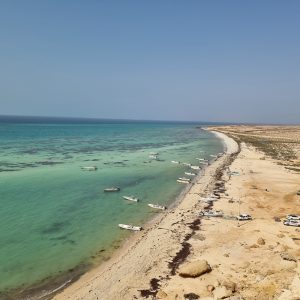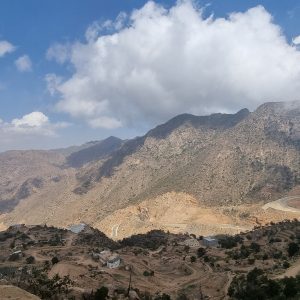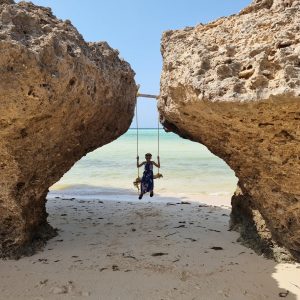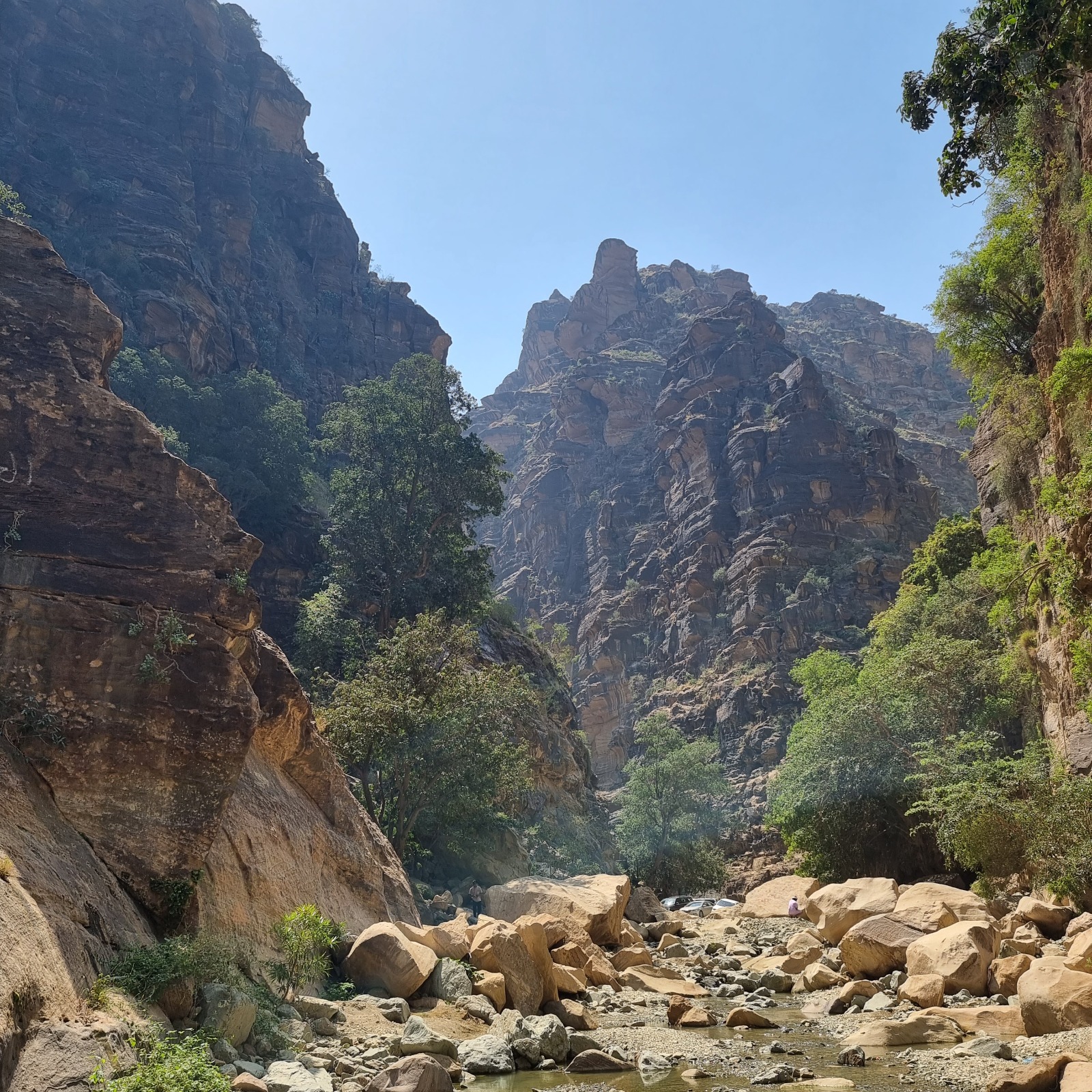By Hilary McCormack
What can be more enjoyable at the start of a trip than an airport experience that is effortless and efficient? So imagine my delight when I could walk off the plane and out the airport front door with my suitcase in my hand in two minutes. Where am I?
I am in beautiful Jazan in Southwest Saudi Arabia.
With the luxury of a four-day weekend stretching ahead, I decided to head to this small Saudi Arabia province on the Yemeni border.
Jazan is the second smallest region of Saudi Arabia (after Al Bahah) and, according to my research, has the highest population density in the Kingdom, with a recorded population of 1,567,547 in the 2017 census.
I quickly discovered that there are several variations of the spelling for Jazan; for example, it can be spelled Jazan, Jizan, Gizan, and Gazan. Ranging from the Arabic: جيزان to the romanized Jizan. I discovered this interchangeability happens because the main port city is, in fact, called Gizan, while the wider province is called Jazan.

The capital city of this southern coastal region is a port city formerly known as Al-Tihameh in Arabic, and it is the jumping-off point for the Farasān Islands. These famed and beautifully unspoiled archipelagos are one of my ultimate targets on this trip.
Defined by the 1934 Treaty of Al-Ṭāʾif as belonging to Saudi Arabia, the Yemenis have also claimed the town since the 1960s, which paints a long and interesting history for the area. Further evidence of the Yemeni influence can be found in the local cuisine.
Jazan’s coastline stretches 300 km along the southern Red Sea coast, north of the Yemeni border. Its land area covers approximately 11,671 km², making Jazan, surprisingly, larger than Lebanon.

Large parts of the region are extremely fertile. In addition, its vast network of working mountainside farms produces high-quality tropical fruits like bananas, mangos, figs, papaya, and other local stables like arabica coffee beans for Saudi Coffee. All these attributes combined provide Jazan with the potential to be a country within a country with a promising tourism future.
Visit Saudi calls this magical place the pearl of the south. But the reality is that this region is more of a diamond waiting to be buffed to a sparkle.
The weather is drier and more moderate from December through March, making winter an excellent time to explore this province’s wealth of culture and nature. The rains come in the summer, making the whole place refreshingly green and lush.
During my stay, I crisscrossed the province by car with a local guide, and each day I aimed to find a unique location, and Jazan has many such places to share.

Overall, Jazan’s tourism portfolio offers excellent diversity across its ever-changing landscapes.
Ranging from alabaster fine sand beaches, azure seas, green mangrove forests, and high craggy mountain peaks decorated with small terraced agricultural enterprises, all combined to frame the region.
I was excited to visit the protected archipelago of islands Al Farasān Island and some of its coral islets, home to abundant sea life and colorful marine creatures. The islands are also a haven for those keen to explore Saudi’s shoreline from the sea. I also explored the merchant houses and evocative recreated stone dwellings of Al Qessar Heritage Village on the islands.
Then I drove high up in the mountains to see ancient palm-roofed forts that overlook the hinterland mountain towns. Jazan’s appeal is as varied as its scenery and is worth visiting. I met lovely friendly people at every turn and felt welcome and safe everywhere I went.
Day one: The mountains of Addayer and its terraced farms, which cling to the steep slopes.
Day two: Al Farasān Island
Day three: Wadi Lajab

